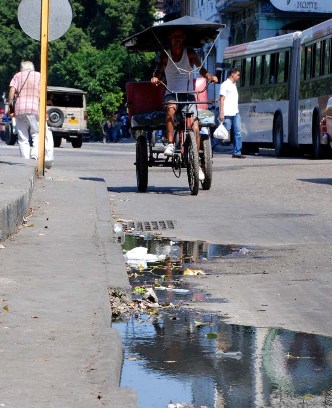Between the Revolution & the Wall (Part I)
Dmitri Prieto

November 7th was the anniversary of the Russian proletarian revolution of 1917, while November 9th marked the 20th year since the fall of the Berlin Wall. Both were key events in the history of the 20th century, particularly those of socialist endeavors.
In Cuba, though its last 50 years have corresponded to the first socialist initiative in the Americas, paradoxically there have been very few recent activities promoting exchanges of information or public debate with respect to those dates, which more than superficially influenced the modern destiny of our nation.
Consequently on Saturday, November 7, the Observatorio Crítico, a network of socio-cultural initiatives, convened and dedicated a day of thought and imagination to both anniversaries. The engagement was held in the outlying rural municipality of San Jose de los Lajas (in Havana Province, which is surrounds the city of Havana) – and was another reason the event was dubbed “Revolution Beyond the Walls.”
While the Cuban capital is a great pole of attraction for intellectual life, the outlying environment is usually sapped of opportunities for initiating processes of collective thought. In a certain sense, we were opposing that tendency.
It’s necessary to add that many of the gathering’s participants had also taken part in the “March for Nonviolence” carried out the day before in the capital city neighborhood of Vedado. This was why the general spirit was one of “Yes, we can!” This enthusiasm was amplified through audiovisual images of that march, which some of the demonstrators from the previous day had been able to capture and then reproduce for those who could not be there.
First of all, we presented summaries of a series of weekly debates that the Observatorio Crítico has been carrying out (generally in the houses of its members) concerning the outcomes of “really existing” Euro-Soviet socialism and its collapse starting in 1989.
Several guests dealt with the destinies of socialist efforts of the 20th and 21st centuries. Ariel Dacal (co-author of the book “Rusia: del socialismo real al capitalismo real” [Russia: From Real Socialism to Real Capitalism], published in 2005 by Cuba’s Social Sciences Publishers) spoke about the post-revolution in the USSR; Mario Castillo discussed the confrontation between social libertarian self-organization and the logic of statist hierarchies, also basing this on the Soviet example; and Pedro Campos Santos presented a brief analysis of the feasibility of the “autogestionario” (workers self-management) socialist model.
In the discussions, Julio Caesar Guanche contributed another key point: Exploitation does not consist of insufficient payment for the value of work realized, but in the fact that workers themselves do not establish the conditions of their labor.

Super interesting!
I wish I could have been there to participate in the discussions! I look forward to hearing more and more!
Very Exciting!
You all inspire me!
Marina
This article, and such phenomena as the march for nonviolence and the day-following conference, give socialists around the world hope that brave Cuba can examine and “perfect” its socialist experiment before it is too late.
Just as a collapse of socialism in Cuba would be a disaster for the world social transformation, its effective reform or “perfection” can mean a dynamic re-birth of the socialist movement planet-wide.
One element of the socialist discussion that is constantly being “eased around” is the legal institution of “private property” in the means of production. This is ironic, b/c when workers, farmers, small business people, etc. own their own means of production directly–cooperatively or individually–they have complete self-management and superb job satisfaction and dignity.
The Cuban reform activists and US cooperative republic activists have at least one thing in common: both must have a program that keeps democratic private property central.